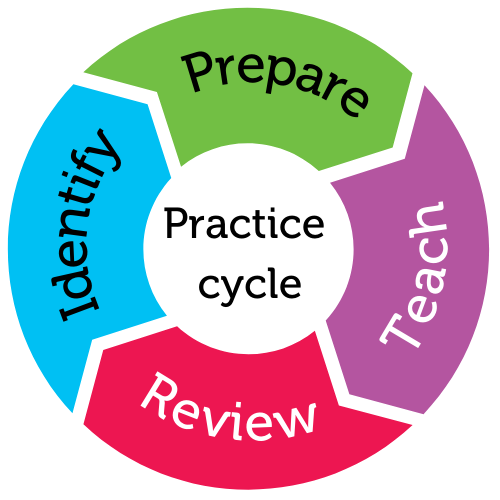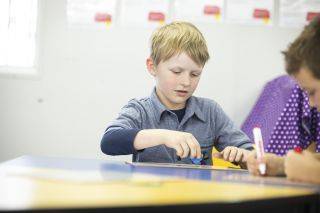
For student year
Helps students to
- build social-awareness
- interact with others
Helps teachers to
- model interactions
- strengthen relationships
Summary
You are enormously influential in setting the tone in your classroom. Your students will often follow your lead when it comes to behavioural and social responses. Modelling a desired response can support students in establishing positive behavioural expectations.
Modelling involves the repeated demonstration of a desired behaviour to students and:
- can be embedded within structured and unstructured activities, routines and transitions
- is easy to implement
- does not require additional staff or resources.
Modelling positive interactions with peers and adults can foster social-emotional learning and includes:
- joint attention
- communication
- social skills
- school-readiness
- academic skills.
Modelling reinforces and embeds whole-class positive social behaviours in your classroom environment. Modelling can incorporate a students' method of communication (i.e., if the student requires a communication device or other forms of technology). Even if a student has limited verbal ability, they can still communicate.
How the practice works
Watch this video to learn more about this practice.
Duration 2:46
Australian Professional Standards for Teachers related to this practice
1.6 - strategies to support the full participation of students with disability
4.1 - support student participation
For further information, see Australian Professional Standards for Teachers AITSL page
Preparing to teach
Identify
Knowing your student/s means that you can identify social skills required by one or more students within the class. These skills might also be highlighted by parents, specialists, teachers, the speech-language pathologist, occupational therapist or psychologist. These skills could include:
- saying good-morning
- giving/sharing toys or classroom equipment
- taking turns to complete a known puzzle with a peer
- answering to name
- answering a simple question.
You will also need to identify if a student uses or prefers verbal, non-verbal, or technology-based forms of communication.
Check
Check that the student has the language and abilities they need to carry out the skills you model. For example, it is unlikely that a student will benefit from you modelling:
- conversational turn-taking when that student has limited verbal ability
- using eye-contact when the child becomes overwhelmed by the facial expressions of others
- answering a question when they do not instinctively respond to speech.
Establish
When using modelling you need to establish:
- the what – the skill you will model
- the why – the rationale for choosing the skill
- the how – the steps of the skill.
Plan
Then plan which relevant opportunities you will use to introduce and model the skill. Plan to model the skill as often as possible. Establish when you can structure modelling into your timetable or future lessons.
It works better if:
- the skill being developed is agreed as a priority for that student at that point in time
- the student is paying attention to the teacher when the skill is being modelled
- the modelled skill will benefit the student within the classroom
- the student enjoys imitating the behaviour being modelled.
It doesn’t work if:
- skills are only modelled once or twice – modelling must be continuous and consistent
- too many skills are modelled at once
- the student does not have the requisite skills.
In the classroom
How do I do it?
When modelling:
- ensure the student is actively engaged in what is happening
- model the skill as often as possible within a variety of relevant activities
- highlight the steps for effective use of the skills.
To support student success, combine modelling with:
- reinforcement (e.g., verbal praise or non-verbal indicators, such as a thumbs up)
- prompting (e.g., verbal reminders).
Practice toolkit
Practice implementation planner template
We know it's not always easy to keep track of what's working and what isn't. So, we've created this template for you to record and reflect on what you're doing to create more inclusive classrooms. The implementation planner contains:
- guidance around goal setting
- a reflection section (what worked, didn’t work, what to change, and next steps)
- prompting questions.
Implementation planner with examples
Set your professional learning goal for:
Model positive interactions
Benefits of goal setting
Setting, working towards, and reflecting on goals helps you grow professionally and improve your practice. You can access AITSL learning resources for teachers to learn more about:How to set goals
The Australian Institute for Teaching and School Leadership recommends using the SMART matrix to frame your goal setting.SMART goals refers to goals that are:
- Specific
- Measurable
- Achievable
- Relevant
- Time-phased
Resources
Model positive interactions - Practice Brief
Related Practices

Model emotional literacy
TEACHING PRACTICE
For student years
Helps students to
- identify and respond to emotions
- regulate emotions
This practice is from the core research project
Learning Cycle

